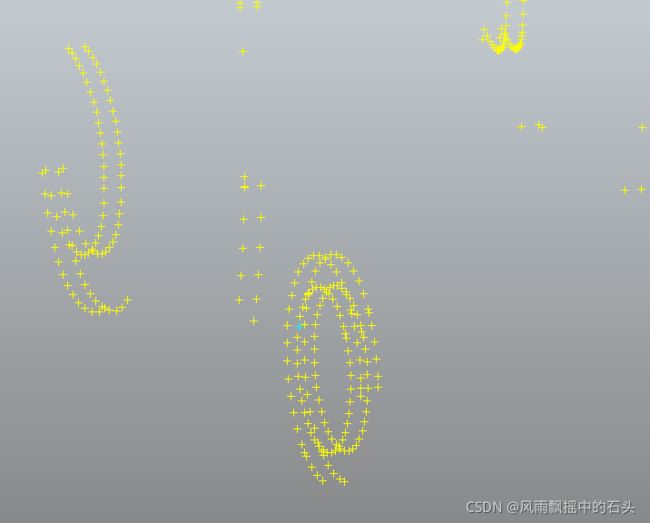pythonocc_立体坐标获取
-- coding: utf-8 --
“”"
“”"
from OCC.Core.BRepBuilderAPI import BRepBuilderAPI_MakePolygon, BRepBuilderAPI_MakeFace
from OCC.Core.gp import gp_Pnt, gp_Dir, gp_Pln
from OCC.Display.SimpleGui import init_display
from OCC.Core.TopExp import TopExp_Explorer
from OCC.Core.TopAbs import TopAbs_VERTEX
from OCC.Core.TopoDS import topods
from OCC.Core.gp import gp
from OCC.Core.BRep import BRep_Tool
from OCC.Display.OCCViewer import rgb_color
from OCC.Core.BRepPrimAPI import BRepPrimAPI_MakeBox, BRepPrimAPI_MakeCylinder
from OCC.Extend.DataExchange import read_step_file, write_step_file,read_stl_file,write_stl_file # STEP文件导入模块
def GetTrapezoidShape(x0, x1, x2, x3, z0, z1, aPlane):
def duobianxing(x0, x1, x2, x3, z0, z1, aPlane):
# ZOX plane
# x0 is bottom left, x1 is bottom right, x2 is top right, x3 is top left
# z0 is bottom, z1 is top
aP1 = gp_Pnt(x0, 0.0, z0)
aP2 = gp_Pnt(x1, 0.0, z0)
aP3 = gp_Pnt(x2, 0.0, z1)
aP4 = gp_Pnt(x3, 0.0, z1)
# 多边形
aPolygon = BRepBuilderAPI_MakePolygon(aP1, aP2, aP3, aP4, True)
shape=BRepBuilderAPI_MakeFace(aPlane, aPolygon.Wire()).Shape()
return shape
#调用多边形
# shape=duobianxing(x0, x1, x2, x3, z0, z1, aPlane)
#立体坐标
# shape = BRepPrimAPI_MakeBox(gp_Pnt(0, 0, 0), 3, 3, 3).Shape()
filename = './Support Generation Disneyland.stl'
shape = read_stl_file(filename)
# display.DisplayShape(shape, update=True)
return shape
def shibie():
gp_Pnt_1 = gp_Pnt()
gp_Dir_1 = gp_Dir(0, 1, 0)
gp_Pln_1 = gp_Pln(gp_Pnt_1 , gp_Dir_1)
#图形长宽高
bcd1,tcd1,ht1 = 40,60,70
# bottom line
x0, x1, x2, x3 = -0.5 * bcd1, 0.5 * bcd1, 0.5 * tcd1, -0.5 * tcd1
# top line
z0, z1 = 0, ht1
aTrapezoid1Shape_1 = GetTrapezoidShape(x0, x1, x2, x3, z0, z1, gp_Pln_1)#获得一个图形或文件
#xianshi
# display.DisplayShape(aTrapezoid1Shape_1, update=True)
#对文件定点查找
anVertexExplorer_1 = TopExp_Explorer(aTrapezoid1Shape_1, TopAbs_VERTEX)
vertex_1 = []#定义空数据
i=0
while anVertexExplorer_1.More(): # 有更多子形状去挖掘
i=i+1
print(i)
anVertex_1 = topods.Vertex(anVertexExplorer_1.Current()) # 当前被探索到的子形状是哪一个, topods_Vertex
# aPnt_1 = BRep_Tool.Pnt(anVertex_1) # 转换成gp_Pnt
if i > 5000:
break
# vertex_1.append(aPnt_1) #加入数据
display.DisplayShape(anVertex_1, update=True)#顯示
anVertexExplorer_1.Next() # 下一个子形状
pnts = [] #建立坐標空數組
for v in vertex_1: #對顶点遍历
coordinate = (v.X(), v.Y(), v.Z()) #逐个获得坐标点数据
if coordinate not in pnts: #
pnts.append(coordinate) #坐标点数据加入数据
# print(pnts)#显示数组
display.FitAll()
start_display()
if name == ‘main’:
display, start_display, add_menu, add_function_to_menu = init_display()
shibie()
